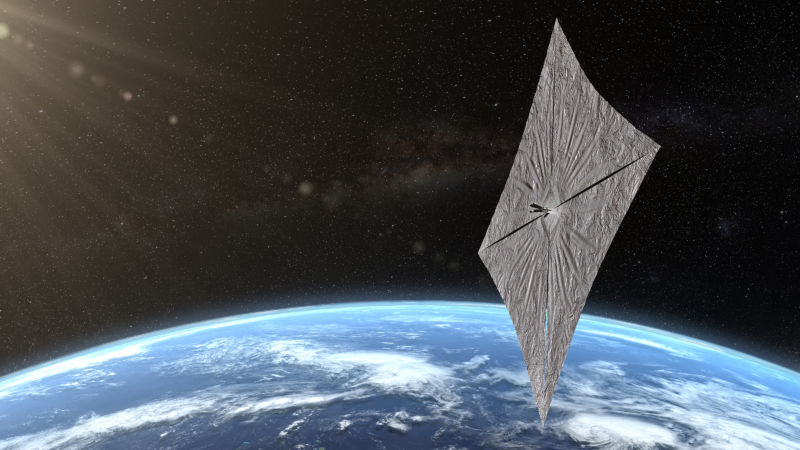One legacy of Carl Sagan may take flight next week—a working solar sail
Ars Technica » Scientific Method 2019-06-20

Enlarge / Artist's concept of LightSail 2 above Earth. (credit: Josh Spradling / The Planetary Society)
As early as next Monday night, a SpaceX Falcon Heavy rocket will launch a cluster of 24 satellites for the US Air Force. Known as the Space Test Program-2 mission, the rocket will deposit its payloads into three different orbits. Perhaps the most intriguing satellite will be dropped off at the second stop—a circular orbit 720km above the Earth's surface. This is the Planetary Society's LightSail 2 spacecraft.
After a week in space, allowing the satellites deposited in this orbit to drift apart, LightSail 2 will eject from its carrying case into open space. About the size of a loaf of bread, the 5kg satellite will eventually unfurl into a solar sail 4 meters long by 5.6 meters tall. The Mylar material composing the sail is just 4.5 microns thick, or about one-tenth as thick as a human hair.
This experiment, which will attempt to harness the momentum of photons and "sail" through space, is the culmination of decades of work by The Planetary Society. "This goes back to the very beginning, to Carl Sagan, Bruce Murray, and Lou Friedman," the organization's chief executive, Bill Nye, told Ars in an interview. "We are carrying on a legacy that has been with us since the founders. It’s just an intriguing technology because it lowers the cost of going all over the place in the Solar System."